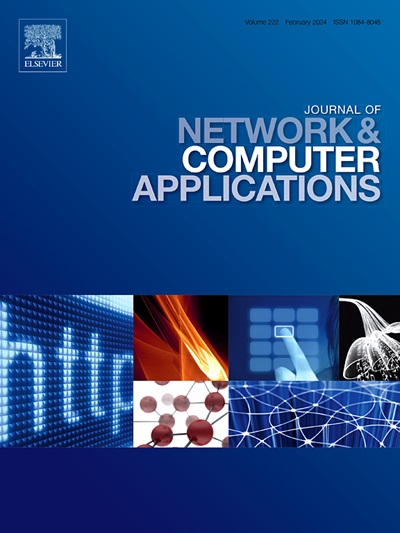LightCGS-Net: A novel lightweight road extraction method for remote sensing images combining global semantics and spatial details
IF 8
2区 计算机科学
Q1 COMPUTER SCIENCE, HARDWARE & ARCHITECTURE
引用次数: 0
Abstract
Road extraction remains a critical area of study within the realm of remote sensing image. The simultaneous extraction of accurate global semantic and spatial detail features from such images poses a significant challenge in contemporary research. This paper introduced a novel road extraction methodology, termed LightCGS-Net, which integrated a spatial detail branch derived from a lightweight CNN and a global semantic branch based on an enhanced Swin Transformer within the encoder. The spatial detail branch enhances the accuracy of tiny road extractions, while the global semantic branch preserves comprehensive contextual information. To address the noise interference caused by the extensive redundant data produced by the dual-branch fusion, Gaussian filtering was employed. The Lightweight Parallel Channel and Space Attention Mechanism (PCSAM) in the skip connection addresses road discontinuities caused by tree and building obstructions. The Feature Fusion Mechanism (FFM) module, using dilated convolution, captures edge features and provides precise structural road information, with distinct loss functions for primary and edge roads. Testing on the DeepGlobe, Massachusetts, and SpaceNet 03-05 datasets showed that our network performed well compared to traditional road extraction networks, surpassing them in evaluation scores and segmentation effectiveness, despite having more parameters and computational time. LightCGS-Net stands out in road networks using Transformer technology due to its lower parameter (43.78M) and flops (196.09G). It performs well in IoU metrics and maintains competitiveness in Recall, F1-score, and Accuracy. It shows superior generalization and exceeds traditional semantic segmentation methods in overall effectiveness.
LightCGS-Net:一种结合全局语义和空间细节的轻型遥感影像道路提取方法
道路提取仍然是遥感影像领域的一个重要研究领域。同时从这些图像中提取准确的全局语义和空间细节特征是当代研究的重大挑战。本文介绍了一种新的道路提取方法,称为LightCGS-Net,该方法集成了来自轻量级CNN的空间细节分支和基于编码器内增强型Swin Transformer的全局语义分支。空间细节分支提高了微小道路提取的准确性,而全局语义分支保留了全面的上下文信息。为了解决双分支融合产生的大量冗余数据所带来的噪声干扰,采用高斯滤波。箕斗连接中的轻型平行通道和空间注意机制(PCSAM)解决了由树木和建筑物障碍物引起的道路不连续问题。特征融合机制(Feature Fusion Mechanism, FFM)模块使用扩展卷积,捕获边缘特征并提供精确的结构道路信息,对主要道路和边缘道路具有不同的损失函数。在DeepGlobe、Massachusetts和SpaceNet 03-05数据集上的测试表明,尽管我们的网络有更多的参数和计算时间,但与传统的道路提取网络相比,我们的网络在评估分数和分割效率方面表现良好。LightCGS-Net在使用变压器技术的道路网络中脱颖而出,因为它的参数较低(43.78M),失败(196.09G)。它在IoU指标中表现良好,并在召回率、f1分数和准确性方面保持竞争力。该方法具有较好的泛化能力,整体效果优于传统的语义分割方法。
本文章由计算机程序翻译,如有差异,请以英文原文为准。
求助全文
约1分钟内获得全文
求助全文
来源期刊

Journal of Network and Computer Applications
工程技术-计算机:跨学科应用
CiteScore
21.50
自引率
3.40%
发文量
142
审稿时长
37 days
期刊介绍:
The Journal of Network and Computer Applications welcomes research contributions, surveys, and notes in all areas relating to computer networks and applications thereof. Sample topics include new design techniques, interesting or novel applications, components or standards; computer networks with tools such as WWW; emerging standards for internet protocols; Wireless networks; Mobile Computing; emerging computing models such as cloud computing, grid computing; applications of networked systems for remote collaboration and telemedicine, etc. The journal is abstracted and indexed in Scopus, Engineering Index, Web of Science, Science Citation Index Expanded and INSPEC.
 求助内容:
求助内容: 应助结果提醒方式:
应助结果提醒方式:


